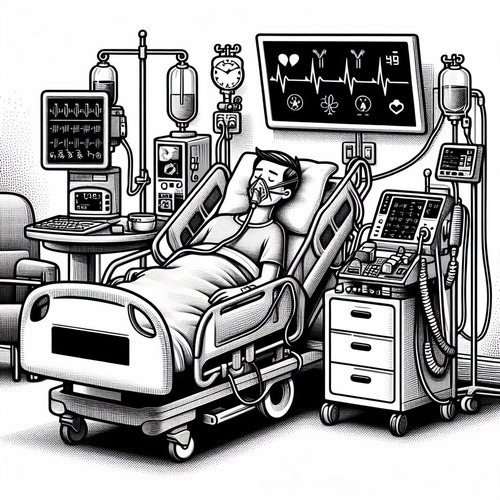The Hidden Costs of IVF: What Fertility Clinics Don’t Tell You
In a world where one in six couples worldwide struggle with infertility, the promise of medical intervention brings hope to many yearning to start a family. In-vitro fertilisation (IVF) has become increasingly common, with the global IVF market surpassing $25 billion annually. Yet behind the hopeful marketing and success stories lies a reality rarely discussed: the physical, emotional, financial, and moral aftermath that many couples face.
Perhaps most sobering is the staggering number of human embryos currently suspended in cold storage worldwide. Recent estimates indicate there are now over 8 million frozen embryos globally—with approximately 1 million in the US alone. Each tiny embryo represents potential human life—created but waiting in an indefinite state of suspended animation, their futures uncertain.
While modern reproductive technologies offer hope, we rarely discuss their full consequences. This post examines what happens after the IVF journey—whether successful or not—and the questions we should be asking before embarking on this path.
THE GROWING INFERTILITY CRISIS
Infertility rates have risen dramatically in recent decades. According to the WHO, infertility now affects between 15-20% of couples globally, a significant increase from previous generations. In some regions, the numbers are even higher.
Research published in the journal Human Reproduction Update revealed sperm counts in Western men have plummeted by over 50% since the 1970s. Environmental toxins, delayed childbearing, poor diet, sedentary lifestyles, and chronic stress all contribute to this growing crisis.
THE IVF INDUSTRY & MARKETING
The fertility industry has capitalised on this growing crisis. With a compound annual growth rate of approximately 9%, the IVF market represents one of healthcare’s fastest-growing sectors. Marketing materials often highlight happy families and newborn babies, creating the impression that IVF routinely leads to successful pregnancies.
What these materials rarely emphasise is that IVF success rates remain relatively low—particularly for women over 35. According to CDC data, the live birth rate per IVF cycle is approximately 31% for women under 35, dropping to just 4% for women over 42. Many couples require multiple cycles, with each attempt costing between $12,000-$25,000 in the US, excluding medications.
The financial pressure can be overwhelming. Surveys indicate over 70% of IVF patients take on significant debt to fund treatments, with many spending their retirement savings or re-mortgaging homes in pursuit of having a child. Insurance coverage remains limited in most states, leaving families to shoulder the costs themselves.
What’s rarely discussed in consultation rooms are the odds. A couple might be told they have a “30% chance of success” per cycle, but the reframing is important: this means they have a 70% chance of failure each time, while still incurring the full financial and emotional costs.
THE PHYSICAL AFTERMATH
The physical toll of IVF extends far beyond the discomfort of daily injections. Women undergoing IVF receive powerful hormonal medications that force their bodies to produce multiple eggs rather than the single egg of a natural cycle. This can lead to Ovarian Hyper Stimulation Syndrome (OHSS), which affects up to 10% of women undergoing IVF and can be life-threatening in severe cases.
The egg retrieval procedure itself carries risks of bleeding, infection, and damage to surrounding organs. Some women report ongoing pain and complications months after their IVF cycles have ended.
Research published in the Journal of the American Medical Association suggests possible links between fertility drugs and hormone-sensitive cancers, though more long-term studies are needed. Additionally, IVF pregnancies carry higher risks of complications—including preeclampsia, gestational diabetes, and premature birth.
For children conceived through IVF, too, studies have indicated slightly higher rates of birth defects and genetic abnormalities. While most IVF children develop normally, the long-term health implications across their lifespans remain understudied. This is because the oldest individuals conceived through IVF are just reaching middle age.
THE EMOTIONAL BURDEN
Perhaps the most profound costs of IVF are emotional. A study in the journal Fertility and Sterility found women experiencing IVF failure showed similar levels of depression as those diagnosed with cancer or heart disease. The hormonal fluctuations from medications can intensify these emotional responses.
Marriages often suffer under the weight of repeated disappointments. The scheduled intimacy, financial strain, and grief of failed cycles can create distance between partners during what is already an extremely vulnerable time. Studies indicate divorce rates are higher among couples who undergo unsuccessful fertility treatments.
The psychological impact extends to successful IVF outcomes as well. Many parents report anxiety throughout pregnancy and early childhood, fearing something will go wrong after investing so much emotionally and financially in creating their family. The pressure to feel only gratitude—never complaint—about the challenges of parenting can also isolate these parents from typical support networks.
For those whose treatments fail repeatedly, the grief can be profound and complicated. Unlike the death of a loved one, there is no clear endpoint to infertility grief—each month brings renewed hope and potential disappointment. Many describe feeling stuck in perpetual mourning for the family they cannot have.
ETHICAL CONSIDERATIONS
The creation and fate of excess embryos represent perhaps the most significant moral consideration in IVF. Standard practice involves creating multiple embryos to increase success chances, but this inevitably leads to difficult decisions about what happens to unused embryos.
Of the estimated 8 million frozen embryos worldwide, many will remain in storage indefinitely, accruing annual fees for their biological parents. Others will eventually be discarded, donated to research, or offered to other couples—all choices that carry profound moral weight.
ALTERNATIVE APPROACHES
For couples facing infertility, there are approaches that work with the body’s natural processes rather than circumventing them entirely. Natural Procreative Technology (NaPro) focuses on identifying and addressing underlying causes of infertility rather than bypassing them. This approach has helped many couples achieve pregnancy while respecting the integrity of the marital act and avoiding the creation of excess embryos.
Medical treatments like targeted hormonal support, surgical correction of conditions like endometriosis or blocked fallopian tubes, and lifestyle modifications can significantly improve natural conception rates without the ethical complexities of IVF.
Adoption represents another beautiful path to parenthood that provides loving homes to children in need. While adoption carries its own challenges and costs, many couples who have embraced this path describe it as a profoundly redemptive experience that transformed their understanding of family.
CONCLUSION: THE HIDDEN COSTS OF IVF
Infertility is often painful, regardless of which treatment options couples pursue. Those facing this challenge deserve compassion, support, and transparent information about all their options—including the full physical, emotional, financial, and moral implications of IVF.
Fertility clinics owe their patients complete honesty about success rates, health risks, and the fate of created embryos. Patients deserve to know not just how many pregnancies result from treatment, but how many live births occur, how many embryos are typically created, and what happens to those not used.
THE HIDDEN COSTS OF IVF—RELATED FAQs
How do IVF success rates vary by country? IVF success rates vary significantly worldwide, with Japan and Spain reporting among the highest success rates at 40-45% live birth per embryo transfer for women under 35. The United States and Australia follow closely at around 31-35%, while some developing nations report success rates as low as 20% due to technological limitations and training differences. The disparities have led to “fertility tourism,” where couples travel internationally seeking better odds, though this raises additional ethical concerns about exploitation and uneven regulatory standards.
- What happens to embryos if couples divorce or die? The legal status of frozen embryos in divorce or death scenarios remains complicated and varies by jurisdiction, with courts typically weighing contract language, property rights, and reproductive autonomy. In several high-profile court cases, ex-spouses have fought bitter legal battles over whether embryos could be used, destroyed, or donated, with some courts ruling that one partner cannot be forced into parenthood against their will. Some fertility clinics now require couples to stipulate in advance what should happen to their embryos in cases of divorce, death, or inability to pay storage fees, though these contracts aren’t always legally binding in every state.
- What percentage of IVF embryos are genetically tested, and what are the implications? Approximately 40% of IVF embryos in the US now undergo preimplantation genetic testing (PGT), a significant increase from just 13% in 2014. While this testing can identify chromosomal abnormalities and over 400 genetic disorders, growing evidence suggests some embryos labelled as “abnormal” may self-correct during development, meaning potentially viable embryos might be discarded. The increasing sophistication of these tests also raises ethical concerns about selection for non-medical traits, with 73% of Americans opposing using gene editing for enhancing intelligence or physical characteristics, according to Pew Research.
- How do IVF births compare to natural conception in terms of maternal bonding? Research from the University of Cambridge found women who conceived through IVF showed slightly higher levels of anxiety and micromanaging behaviours during early parenting, though these differences generally disappeared by the child’s first birthday. Brain imaging studies have shown identical activation patterns in maternal brain regions responsible for bonding, regardless of conception method. However, some IVF mothers report feelings of guilt or inadequacy stemming from their fertility struggles, which therapists specialising in reproductive issues say can sometimes impact their confidence as parents.
What are the environmental impacts of the IVF industry? The environmental footprint of IVF remains largely unexamined, though the industry generates significant medical waste through disposable equipment, hormone packaging, and single-use laboratory materials. Fertility clinics also maintain energy-intensive laboratories and cryo-storage facilities operating 24/7, with one study estimating that a large fertility centre’s annual carbon footprint equals that of approximately 200 average households. Additionally, the pharmaceutical by-products from fertility medications enter wastewater systems, contributing to the growing concern about hormones in water supplies, though the specific impact of these compounds requires further research.
THE HIDDEN COSTS OF IVF—OUR RELATED POSTS
Editor's Pick

Why Do People Hate the Doctrine of Election?
…WHEN THEY REALLY SHOULDN’T Few Bible doctrines provoke stronger reactions than election. The idea that God chose some for salvation [...]

The Doctrine of Providence: Does God Really Govern All Things?
You’re sitting in the doctor’s office when the diagnosis lands like a thunderclap. Your mind races: Why this? Why now? [...]

No Decay, No Defeat: What It Means That Christ’s Body Saw No Corruption
On the Day of Pentecost, Peter stood before thousands and made a startling claim: David's body decayed in the tomb, [...]
SUPPORT US:
Feel the Holy Spirit's gentle nudge to partner with us?
Donate Online:
Account Name: TRUTHS TO DIE FOR FOUNDATION
Account Number: 10243565459
Bank IFSC: IDFB0043391
Bank Name: IDFC FIRST BANK






